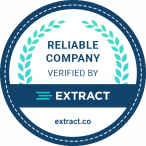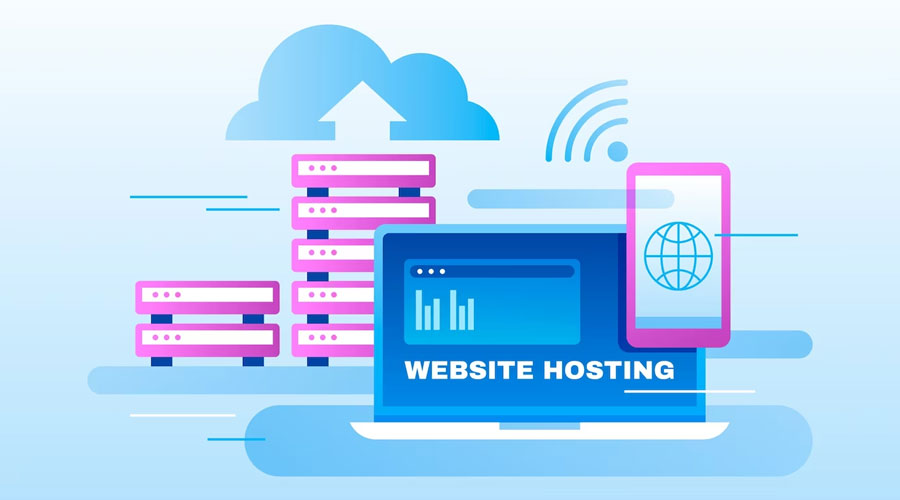Table of Contents
Introduction to Blog and Personal Website Services
In this ever-evolving digital era, the internet is not merely a vast information repository but a dynamic space for personal and professional expression. Blog and personal website services stand at the forefront of this digital revolution, offering individuals and businesses the opportunity to carve out their unique corner of the web. Let’s dive deeper into the world of blog and personal website services by exploring their origins, growth, and the pivotal role they play in the digital landscape.
The Birth of Personal Websites: The concept of personal websites emerged in the late 1990s when individuals with a passion for the web and basic HTML skills began creating simple online pages to share personal interests, stories, and experiences. These early personal websites were often raw and unpolished, yet they represented the initial sparks of personal expression on the internet.
The Blogging Revolution: Blogs, short for “weblogs,” became a game-changer in the early 2000s. They allowed individuals to easily publish their thoughts, observations, and opinions online. Blogging platforms like Blogger and LiveJournal made it accessible to a broader audience, ushering in a new era of self-expression.
The Rise of Content Management Systems: Content Management Systems (CMS) like WordPress revolutionized the way websites were built and managed. They democratized web publishing by eliminating the need for extensive coding skills. Bloggers and businesses alike could now create, update, and maintain their websites with ease.
The Social Media Impact: The advent of social media platforms, like Facebook, Twitter, and Instagram, transformed the way people shared personal experiences. However, it also had an impact on personal websites and blogs. Many personal websites incorporated social media sharing and integration, making it easier for users to engage with content and share it with their networks.
The Evolving Landscape: In the 21st century, blog and personal website services have continued to evolve. They now offer a wide range of features and capabilities, including multimedia integration, e-commerce functionalities, and advanced SEO tools. These platforms are more than just personal diaries; they serve as hubs for personal branding, professional portfolios, and community building.
A Thriving Ecosystem: Today, the blog and personal website ecosystem is a vibrant and diverse landscape. It encompasses a wide array of niches, from fashion and lifestyle blogs to technical tutorials and business websites. Users can choose from a plethora of platforms and hosting options to tailor their online presence to their specific needs and goals.
As we delve further into this exploration of blog and personal website services, we will examine their significance, explore the popular platforms available, dissect the key features that make them invaluable, and analyze the benefits they offer to individuals and businesses. Additionally, we will delve into real-world success stories, understand the challenges website owners face, and provide practical tips for optimizing the potential of these platforms. Finally, we’ll cast a forward-looking gaze into the future, considering emerging trends and technologies that will continue to shape the world of blog and personal websites.
Key Features and Functionality
21. E-commerce Integration: Many blog and personal website services offer e-commerce capabilities. Users can set up online stores, showcase products, and handle transactions directly on their websites. These platforms provide features like product listings, shopping carts, and secure payment processing, making it convenient for businesses to sell their products or services online.
22. Content Scheduling: Scheduling content in advance is a valuable feature for bloggers and website owners. It allows you to plan your content calendar and automate the publication of posts. This is especially useful for maintaining a consistent posting schedule and reaching your audience at optimal times.
23. Comment Moderation: To manage user interactions effectively, blog and personal website services include comment moderation tools. Users can approve, disapprove, or filter comments to maintain a positive and respectful online community. Spam detection and blocking features also help keep unwanted comments at bay.
24. Social Sharing and Integration: In the age of social media, it’s essential for websites to seamlessly integrate with various social platforms. Many blog and personal website services offer social sharing buttons, allowing visitors to easily share your content on their social profiles. Integration with social media feeds and profiles helps maintain a cohesive online presence.
25. Video and Multimedia Support: The integration of multimedia elements is crucial for engaging modern audiences. Blog and personal website services support video hosting, embedding, and streaming. This is particularly valuable for vloggers, video content creators, and businesses looking to leverage video marketing.
26. Image Galleries and Portfolios: For photographers, artists, and creatives, image galleries and portfolios are key features. These tools allow users to showcase their work in a visually appealing manner. Visitors can view high-quality images and gain insights into the creator’s skills and style.
27. Email Marketing Integration: Building and managing an email subscriber list is a powerful marketing strategy. Many blog and personal website services offer integration with email marketing platforms, allowing users to collect email addresses, send newsletters, and engage with their audience through email campaigns.
28. Interactive Forms: Forms are essential for gathering information from visitors, such as contact details, feedback, or user-generated content. Website owners can use form builders to create custom forms and surveys, which can serve various purposes, from lead generation to market research.
29. Podcasting Support: The podcasting industry has grown significantly in recent years. Blog and personal website services often include features for hosting and sharing podcast episodes. This is beneficial for podcasters who want to complement their audio content with written or visual content on their websites.
30. Membership and Subscription Systems: For creators and businesses looking to offer premium content or exclusive benefits to subscribers, membership and subscription systems are critical. These features allow users to set up paywalls, membership tiers, and subscription-based access to certain content or services.
31. Content Versioning and Revisions: Maintaining an archive of content revisions is essential for collaboration, error correction, and content history. Blog and personal website services often include versioning features, allowing users to track and restore previous versions of their content.
32. Web Push Notifications: Web push notifications are a powerful way to re-engage your audience. Users can send notifications to subscribers’ devices, notifying them of new content, updates, or special offers. This feature helps boost user retention and return visits.
33. Authorship Attribution: In multi-author websites or collaborative projects, authorship attribution is crucial. These platforms offer tools to credit multiple authors, assign author profiles, and provide bylines for individual contributions.
34. Mobile Apps and Accessibility: Some blog and personal website services offer mobile app creation tools. This allows users to develop customized mobile applications that provide a dedicated and optimized experience for their audience.
35. Content Import and Export: Portability of content is an essential feature. Users can import content from other platforms or export their content for backup and migration purposes. This feature ensures that your content is not locked into one platform.
36. Search Functionality: Search functionality is vital for larger websites with extensive content archives. It allows visitors to find specific information quickly and easily. Effective search features enhance user experience and help retain visitors.
37. User Roles and Permissions: In collaborative environments or when managing user-generated content, user roles and permissions are crucial. These features allow website owners to control who can create, edit, or publish content and manage various aspects of the site.
38. A/B Testing and Analytics: For optimizing the performance of websites, A/B testing tools are valuable. They help users experiment with different layouts, content, and calls to action to determine what works best. Analytics features provide detailed insights into website traffic, user behavior, and audience demographics, helping users make data-driven decisions.
39. Content Categorization and Tagging: Effective content organization is essential for both visitors and search engines. Blog and personal website services offer categorization and tagging features, allowing users to group content by topics, date, or other criteria. This improves site navigation and SEO.
40. Offline Content Access: Some website services offer options for offline access to content. Visitors can download articles, pages, or multimedia content for later reading, ensuring that your content is accessible even when an internet connection is not available.
These key features and functionalities enhance the capabilities of blog and personal website services, enabling users to create and manage diverse types of content and engage with their audience in meaningful ways. Whether you’re a content creator, business owner, or nonprofit organization, these tools empower you to make the most of your online presence.
Designing a Personal Website
1. Introduction
The Significance of Personal Websites: In a world where our online presence is often our first impression, personal websites have become essential tools for showcasing our identity, talents, and achievements. They allow individuals to curate their digital narrative and make a lasting impression on visitors.
Your Digital Identity: Your personal website is an extension of your identity in the digital realm. It’s a place where you can express your passions, share your expertise, and connect with like-minded individuals or potential employers. Whether you’re an artist, a writer, a professional, or an enthusiast, your website serves as your online home.
2. Planning Your Personal Website
Defining Your Purpose: Before you start designing your website, clarify its purpose. Do you want to showcase your portfolio, share your thoughts through a blog, promote your skills, or simply create an online presence? A clear purpose will guide your design and content decisions.
Identifying Your Target Audience: Understanding your target audience is crucial for tailoring your website to their needs and preferences. Are you creating a personal website for potential clients, employers, or fans? Define your audience to shape your content and design choices.
Selecting the Right Platform: Choose the platform that suits your needs. Popular options include WordPress, Wix, Squarespace, and personal website builders like Weebly. Your choice should align with your technical expertise and design preferences.
3. Designing Your Website
Choosing a Domain Name: Select a domain name that is easy to remember and reflects your brand or identity. Keep it short, simple, and relevant to your content.
Selecting a Hosting Service: Your hosting provider will impact your website’s speed and reliability. Choose a hosting service with a good reputation for customer support and uptime.
Picking a Content Management System (CMS): Most personal websites are built using content management systems. WordPress is a popular choice due to its flexibility and extensive ecosystem of plugins and themes. However, other CMS options may better suit your specific needs.
Design Elements: Layout, Color, and Typography: Your website’s design elements greatly influence its aesthetics and user experience. Pay attention to layout, color schemes, and typography to create a visually appealing and cohesive website.
4. Creating Compelling Content
Crafting an Engaging Bio: Your bio is your digital introduction. Write a compelling, concise, and informative bio that tells visitors who you are, what you do, and what makes you unique.
Showcasing Your Portfolio: If you’re an artist, designer, photographer, or have work to showcase, create a visually appealing portfolio. Organize your work into categories and provide descriptions to highlight your skills and creativity.
Blogging and Sharing Insights: Blogs are an excellent way to share your thoughts, expertise, and experiences. Regularly update your blog with relevant and engaging content to attract and retain visitors.
Integrating Multimedia: Enhance your content with multimedia elements such as images, videos, and infographics. These can make your website more engaging and visually appealing.
5. Navigating User Experience
Creating an Intuitive Navigation Menu: A clear and intuitive navigation menu helps visitors find their way around your website easily. Use descriptive labels and keep the menu organized.
Mobile Optimization: Ensure that your website is responsive and mobile-friendly. With an increasing number of users accessing websites from mobile devices, mobile optimization is crucial.
Speed and Performance: Optimize your website for speed and performance. Slow-loading websites can deter visitors. Compress images, use caching, and choose a reliable hosting provider to ensure a fast website.
6. Branding Your Personal Website
Defining Your Brand: Your personal website is an extension of your personal brand. Define your brand’s core values, message, and what sets you apart from others in your niche.
Logo and Visual Identity: Create a memorable logo and establish a visual identity that includes a consistent color palette and typography. These elements help reinforce your brand across your website and social media.
Consistent Branding Across Social Media: Maintain consistent branding on your social media profiles to create a unified online presence. Use the same profile picture, cover photo, and branding elements to help people recognize you across platforms.
7. SEO and Online Visibility
Optimizing for Search Engines: Implement on-page and off-page SEO techniques to improve your website’s visibility in search engine results. This includes optimizing meta tags, image alt text, and creating high-quality, shareable content.
Leveraging Keywords: Research and incorporate relevant keywords into your content to make it more discoverable. Use tools like Google Keyword Planner to identify valuable keywords in your niche.
Generating Backlinks: Backlinks from reputable websites can improve your website’s authority and search engine ranking. Create valuable, shareable content that encourages others to link to your site.
8. Social Media Integration
Linking to Your Social Profiles: Make it easy for visitors to connect with you on social media by linking to your profiles on your website. This enhances your online presence and encourages engagement.
Sharing Buttons: Include social sharing buttons on your content, allowing visitors to share your posts and pages with their followers, expanding your reach.
Cross-Promotion: Cross-promote your website on your social media channels and vice versa. Share snippets of your website’s content on social media to drive traffic to your site.
9. Interactivity and Engagement
Contact Forms: Include contact forms that visitors can use to get in touch with you. Make it easy for people to reach out and ask questions or provide feedback.
Comments and Feedback: Enable comments on your blog posts to foster discussion and engagement. Respond to comments to create a sense of community and interaction.
Newsletter Signup: Encourage visitors to subscribe to your newsletter. Building an email list allows you to maintain a direct line of communication with your audience.
10. Security and Privacy
SSL Certificates: Protect user data and build trust by securing your website with an SSL certificate. This ensures that data is encrypted during transmission.
Regular Backups: Frequent backups of your website data are essential to recover in case of data loss or security breaches. Use backup plugins or your hosting service to automate this process.
Data Protection: Comply with data protection laws, such as GDPR, if applicable to your website and audience. Clearly communicate your privacy policy to visitors.
11. Analytics and Insights
Google Analytics: Integrate Google Analytics to track your website’s performance. Analyze data on visitor behavior, demographics, and traffic sources to make informed decisions.
Monitoring User Behavior: Pay attention to how visitors interact with your website. Identify popular content and areas that may need improvement to enhance user experience.
Content Performance: Regularly review which content performs best and use this data to guide your content strategy. Create more of what resonates with your audience.
12. Maintaining and Updating Your Website
Regular Content Updates: Consistently update your website with fresh content to keep visitors engaged and encourage them to return. Schedule content updates to maintain a steady flow of new material.
Software and Plugin Updates: Keep your website’s software and plugins up to date to ensure optimal performance and security. Outdated components can be vulnerable to security threats.
Backups and Security Checks: Perform regular security checks and maintain backups to safeguard your website from potential threats. Security plugins can help automate this process.
13. Promoting Your Personal Website
Networking and Outreach: Network with like-minded individuals in your niche and collaborate on projects or content. Outreach can help expand your audience and online connections.
Content Marketing: Create a content marketing strategy to promote your website. Share your content on social media, participate in guest blogging, and leverage email marketing to reach a broader audience.
Email Marketing: Build and nurture an email list to establish a direct line of communication with your audience. Regularly send newsletters with valuable content and updates.
14. The Future of Personal Websites
Emerging Web Design Trends: Keep an eye on emerging web design trends such as dark mode, minimalism, and immersive storytelling. These trends can influence the aesthetics and functionality of your website.
The Impact of AI and Automation: The integration of AI and automation in web design can streamline tasks like chatbots for customer support and content personalization. Stay informed about these developments to enhance your website’s user experience.
Domain Registration and Hosting
1. Introduction
What Are Addon Domains? Addon domains are additional domain names that can be hosted under a single web hosting account. They allow website owners to manage multiple websites using one hosting plan, simplifying web management and cost-effectiveness. Each addon domain can have its own content, email accounts, and settings, independent of the primary domain.
The Growing Need for Multiple Domains: With the increasing importance of an online presence, many individuals and businesses find it necessary to own multiple domains. Whether it’s for branding purposes, targeting different markets, or creating distinct online projects, the need for managing multiple websites efficiently has grown.
2. The Importance of Addon Domains
Streamlining Web Management: Addon domains simplify the management of multiple websites. Instead of purchasing separate hosting plans for each domain, users can consolidate their websites under a single hosting account. This streamlines the administration of websites, making it easier to update, monitor, and maintain them.
Cost Efficiency: Add-on domains are a cost-effective solution for website owners. They eliminate the need to invest in separate hosting plans, saving both money and resources. This is especially beneficial for individuals and small businesses with limited budgets.
SEO Benefits: Search engine optimization (SEO) is crucial for online visibility. Hosting multiple domains under a single account can help improve SEO by consolidating domain authority, making it easier to manage backlinks, and enhancing the overall SEO strategy.
3. Domain Registration Process
Choosing a Domain Registrar: To register an addon domain, you need to choose a domain registrar, a company that facilitates domain registration. Popular domain registrars include GoDaddy, Namecheap, Google Domains, and many others. Selecting a reliable registrar is essential for the smooth management of your domains.
Registering an Addon Domain: Once you’ve chosen a domain registrar, you can search for available domain names and complete the registration process. Keep in mind that domain registration typically requires an annual fee, and you’ll need to provide accurate contact information.
DNS Settings and Configuration: After registering a domain, you need to configure the Domain Name System (DNS) settings. This involves pointing the domain to your hosting provider’s servers. DNS settings control how domain names translate into IP addresses, ensuring that visitors reach your website when they enter the domain in their browsers.
4. Hosting an Addon Domain
Selecting a Hosting Provider: Choosing the right hosting provider is crucial for successful addon domain hosting. The provider should support addon domains and offer the necessary resources to accommodate the additional websites. Popular hosting providers like Bluehost, SiteGround, and HostGator often offer addon domain support.
Adding and Managing Addon Domains: Once you have hosting in place, you can add and manage addon domains through your hosting control panel. This involves specifying the directory where the website files for each addon domain will be stored. Each addon domain operates as a separate entity, with its own files, email accounts, and settings.
Server Resources and Limitations: It’s important to be aware of the server resources and limitations associated with your hosting plan. Hosting multiple addon domains can strain server resources, impacting the performance of your websites. Ensure that your hosting plan provides sufficient resources to accommodate the added domains.
5. Benefits of Using Addon Domains
Simplified Website Management: Addon domains simplify website management by centralizing all websites under one hosting account. This streamlines tasks such as content updates, security monitoring, and software maintenance.
Cost-Effective Hosting: Using addon domains is a cost-effective approach to web hosting. You only pay for a single hosting plan, even if you manage multiple websites. This can result in significant cost savings compared to purchasing separate hosting plans for each domain.
Enhanced SEO Opportunities: Addon domains can offer SEO benefits by consolidating domain authority. When multiple websites share the same hosting account, it’s easier to manage backlinks and implement a cohesive SEO strategy, potentially improving search engine rankings.
6. Considerations and Potential Challenges
Resource Allocation: Hosting multiple domains on a single account can strain server resources, particularly if your hosting plan is not adequately configured. Resource limitations can affect website performance and loading times.
Security Concerns: Security is a critical consideration when managing addon domains. Compromised security on one domain could potentially impact all the websites on the same hosting account. It’s essential to implement robust security measures to protect your websites.
Website Performance: Website performance can be affected by the number of addon domains hosted on a single account. If your websites experience high traffic or resource-intensive tasks, it’s crucial to choose a hosting plan that can handle the load.
Domain Reputation: The reputation of one domain can impact the others on the same hosting account. If one domain is associated with spam or malicious activities, it could lead to issues with email deliverability and SEO for all the domains on that account.
7. Tips for Maximizing Addon Domain Hosting
Optimize Resource Usage: Efficiently manage server resources by optimizing website files, using caching, and minimizing resource-intensive plugins or scripts.
Keep Software and Plugins Updated: Regularly update website software, content management systems, and plugins to ensure optimal performance and security.
Implement Security Measures: Enhance website security with measures like strong passwords, SSL certificates, regular backups, and security plugins.
Monitor Website Performance: Keep a close eye on website performance by monitoring loading times and addressing any issues promptly to maintain a positive user experience.
8. The Future of Addon Domain Hosting
Evolving Hosting Technology: As web hosting technology continues to advance, addon domain hosting is likely to become even more streamlined and resource-efficient. Hosting providers may develop new solutions to optimize server resource allocation for multiple domains.
Enhanced Integration of Domains: The integration of addon domains with hosting platforms may become more seamless, simplifying the setup and management process. Users can expect user-friendly interfaces and tools for managing multiple domains.
Potential Impact of Emerging Technologies: Emerging technologies, such as edge computing and serverless hosting, may reshape the way addon domains are hosted. These technologies could offer greater scalability and resource allocation, addressing some of the challenges associated with hosting multiple domains.
Case Studies and Success Stories
1. Food Blogging: Smitten Kitchen
Deb Perelman, the creator of Smitten Kitchen, started her food blog as a way to document her cooking adventures in a small New York City kitchen. What began as a personal project quickly gained a massive following due to her engaging writing and delectable recipes. With the help of WordPress, Deb transformed her blog into a full-fledged website. She has published two cookbooks, appeared on national television, and established herself as a respected figure in the food blogging world. Smitten Kitchen demonstrates how a personal blog can evolve into a successful brand with a passionate audience.
2. Business and Marketing: Neil Patel
Neil Patel is a digital marketing guru known for his blog, neilpatel.com. He uses his personal website not only to share marketing insights but also to provide consulting services. Through consistent content creation, he has established himself as an authority in the field, attracting clients and lucrative speaking engagements. Neil’s success story illustrates how a blog can serve as a powerful marketing tool for consulting and service-based businesses.
3. Travel and Adventure: The Broke Backpacker
Will Hatton, the adventurer behind The Broke Backpacker, took his passion for traveling on a shoestring budget and turned it into a thriving online business. Will’s blog features travel guides, tips, and advice for budget-conscious travelers. With the help of WordPress, he created a comprehensive resource for backpackers around the world. He monetizes his site through affiliate marketing, sponsored content, and selling digital products. The Broke Backpacker shows how a personal blog can become a profitable business within the travel niche.
4. E-commerce and Personal Branding: Marie Forleo
Marie Forleo, a life coach and business strategist, has built a personal brand that revolves around her website and YouTube channel. Her site serves as the central hub for her online courses, books, and coaching services. With a strong online presence, Marie has attracted a global audience and generated substantial revenue through her website. Her success exemplifies how personal branding and e-commerce can intersect to create a successful online business.
5. Niche Communities: MyFitnessPal
MyFitnessPal is a prime example of a website that has leveraged its blog to build a dedicated community around health and fitness. They offer nutritional information, exercise tracking, and a blog filled with expert advice and success stories. Users share their fitness journeys and support one another, creating an engaged and active community. The website’s blog has played a pivotal role in fostering this sense of belonging and providing valuable resources for users pursuing healthier lifestyles.
6. Nonprofit Impact: Charity Water
Charity Water, a nonprofit organization, has harnessed the power of its website and blog to raise awareness and funds for clean water initiatives. Their blog shares compelling stories from the field, showcasing the impact of their work. The website enables donors to track the progress of specific projects and see their contributions at work. The organization’s website and blog have been instrumental in building trust and transparency with their supporters.
These case studies and success stories demonstrate the diverse ways in which blog and personal website services can be harnessed to achieve personal, professional, and social goals. Whether it’s personal expression, business growth, or community engagement, these platforms continue to play a crucial role in our digital world, connecting people and ideas across the globe.
Future Trends and Developments
Voice Search Optimization: As voice-activated devices like smart speakers and virtual assistants become more prevalent, optimizing websites for voice search is crucial. Future blog and personal website services will need to focus on voice-friendly content and improved voice recognition capabilities.
Mobile-First Design: With the majority of internet traffic coming from mobile devices, website services will continue to emphasize mobile-first design. Ensuring websites are responsive and load quickly on mobile devices will be a priority, and mobile optimization will become standard.
Progressive Web Apps (PWAs): PWAs are web applications that offer a native app-like experience on the web. They are reliable, fast, and work offline. As PWAs gain popularity, blog and personal website services may offer tools to easily convert websites into PWAs, providing a more engaging user experience.
Privacy and Data Protection: Given increasing concerns about online privacy and data security, future developments in website services will likely include more robust privacy features. This might include easier compliance with data protection regulations, enhanced encryption, and tools for users to control their data.
AI-Powered Content Generation: AI-driven content creation tools are already in use, but they will become more sophisticated. These tools will help website owners automate content generation, allowing for quicker updates and potentially more personalized content.
Virtual Reality (VR) and Augmented Reality (AR) Integration: As VR and AR technologies advance, website services may incorporate VR/AR features. This could mean immersive product showcases for e-commerce sites or interactive storytelling for bloggers, adding a new dimension to online experiences.
Blockchain for Content Verification: Blockchain technology can be used to verify the authenticity of content, particularly in journalism and content creation. Blog and personal website services may offer blockchain-based tools to ensure the trustworthiness of published material.
Augmented Content Recommendations: AI will play a crucial role in content recommendations. Future developments may involve AI algorithms that can analyze user behavior and preferences to provide more accurate and personalized content suggestions.
Multilingual and Globalization Support: As websites cater to a global audience, support for multilingual content and localization will become increasingly important. Future website services will need to simplify the process of translating and adapting content for different regions.
Green Hosting and Sustainability: Sustainability and environmental concerns will likely lead to the development of “green hosting” services that focus on energy efficiency and reducing the carbon footprint of websites. Users may be given the option to host websites on eco-friendly servers.
User-Generated Content Integration: Incorporating user-generated content and community contributions into websites will be a growing trend. Websites may offer tools to easily curate and feature user-generated content, enhancing community engagement.
Cross-Platform Integration: Website services will need to adapt to an increasingly interconnected digital ecosystem. This includes tighter integration with social media platforms, e-commerce marketplaces, and other online services to create a seamless online presence.
Evolving Design Trends: Website design trends will continue to evolve. The use of micro-interactions, bold typography, and minimalist designs will impact the way websites look and feel, ensuring a fresh and modern user experience.
The Role of Data and Analytics: Data-driven decision-making will remain central to website management. Advanced analytics tools will provide deeper insights, allowing users to make data-driven improvements to their websites, content strategies, and user experiences.
Accessibility and Inclusivity: Improving website accessibility and ensuring inclusivity for users with disabilities will be a focus. Future developments may include better accessibility plugins, tools, and compliance with international standards.
In summary, the future of blog and personal website services is filled with exciting possibilities and challenges. Voice search, mobile-first design, PWAs, privacy, AI content generation, VR/AR integration, blockchain, personalized content recommendations, and sustainability will shape the landscape. Adapting to these trends and developments will be essential for individuals and businesses to stay relevant and provide valuable online experiences. The evolution of these services will continue to empower users to create, share, and connect in the digital age.















